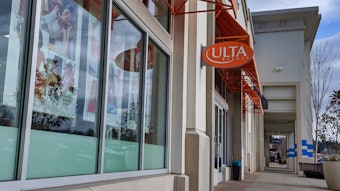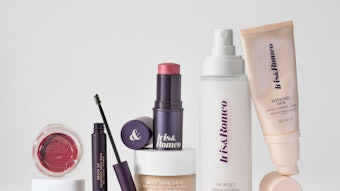If you are surfing the Internet for cosmetic science innovations, you may be looking in the wrong place. Most of those in the industry are aware of the excellent technical resources available online for cosmetic science. The list is a long one and includes Web sites run by the CTFA, FDA, Allured Publishing and innumerable suppliers who have strong Web presence. But if you are looking for what’s next, what’s new, what’s never been done … then you need to start exploring the Web 2.0. This new Internet features grassroots, community-built resources that can provide insight and innovation to cosmetic scientists and marketers. This article explains how to tap into four favorites: blogs, media sharing sites, forums and shopping sites.
Blogs
A blog is a Web site in which content is added in chronological order. It is an online journal typically maintained by one or more people, known as bloggers. For various reasons, they freely provide opinion and commentary on almost any subject imaginable. Sophisticated bloggers will blend text, images and links to relevant Web sites to create an engaging experience for their readers. Some bloggers have even moved beyond text to include video and audio in their presentations. The most popular sites for starting a free blog are blogger.com or wordpress.com.
For people in the cosmetic industry, blogs can be a great source for information. An individual can access information such as product evaluations, consumer insights, new trends and even new product ideas. Of course, this type of research is no substitute for true, quantified market research, but it can be helpful in gaining unique insights. Would you like to know what consumers might think of your product without paying for an expensive study? Try sending samples to a blogger. They will use the product and then write a review for their entire reading community to see.
Some of these audiences are huge. A beauty blog such as Beauty Addict (beautyaddict.blogspot.com) gets more than 40,000 readers a month. It was started by Kristen Kelly, a writer living in New York, and has grown into a product opinion-making machine. Her self-described main qualification is that she is a little obsessed with makeup.
For a more international flair, look to the Jack & Hill blog (jackandhill.net). This is a joint blog written by Hillary Johnson, a former Los Angeles Times beauty writer, and Jackie Danicki, a beauty-obsessed American living in London. Both of these blogs have loyal readers who also participate in the daily conversation by leaving comments. It is fascinating and useful to read what people really think about cosmetics.
The blog ranking service Technorati (technorati.com) lists almost 1,000 beauty blogs. To know what kinds of products people want and don’t want, beauty blogs are a great resource. Other blog areas to consider searching are science, marketing and innovation blogs. All of this free information is out there just waiting to be found.
Media Sharing Sites
Unless you have been completely detached from society, you have likely heard about You Tube (youtube.com) and the fact that Google recently purchased it for $1.65 billion. You Tube is an example of another useful site on the Internet, a media sharing site. At these Web sites, a community of users is allowed to upload and share nearly any kind of media they can produce. There are Web sites for sharing pictures, videos and even audio. These users are regular people who can provide fresh insights into the mind of the consumer. It’s today’s social anthropology and it is free.
For video sharing, You Tube is the premiere service. Here are actual videos of people applying makeup, styling hair and interacting with products. It is similar to visiting a salon or spa and watching the operators apply and use products. In addition to international commercials and TV programs, new product ideas abound.
For images, Flickr (flickr.com) is a great place to search. The users of this free service post any kind of picture imaginable. A really interesting feature on this site is a group called “What’s in my bag.” People spill out the contents of their purse or backpack and show exactly what they carry around with them. This provides great insight into how consumers live their lives.
If text blogs are not enough, try audio blogs—more commonly known as podcasts. These are similar to home produced radio shows about specific subject areas. A service such as Odeo (odeo.com) allows users to upload their audio files and publicize their programs. There are numerous podcasts about beauty and beauty care products. Some are better produced than others, but they all can give a new perspective on the consumer. For beauty information, a podcast such as Product Girl is great. Also try out Lip Gloss and Laptops, the “thinking woman’s health, cosmetics, and beauty podcast.”
Forums and Communities
An Internet forum is a virtual meeting place for holding discussions on any topic imaginable. These sites are an evolution of the bulletin boards and newsgroups that were popular in the 1980s and 1990s.
Forums consist of member-written threads, which are a series of comments about a specific topic. These comments may be moderated or reviewed by the person(s) managing the forum before they are posted publicly. Forums may be managed by private groups or they may have commercial sponsors. These virtual communities can be an exciting way to tap into what consumers are saying about the products they use and their beauty care habits and practices. It’s amazing—a brand manager can read what thousands of consumers say they like and don’t like about every type of cosmetic product imaginable. Again, this information is no replacement for real consumer research, but it can be a valuable tool.
One of the most interesting aspects of forums is the sense of virtual community that can develop for regular users. An example of this kind of community is the Long Hair Forum (longhaircareforum.com/home.php), which, as the name implies, is dedicated to the topic of growing long hair. Members share pictures of their hair, discuss how long they’ve been growing it and swap their favorite tips and tricks. There also is plenty of lively debate about the best type of hair care products to use on very long hair—their hair care tips forum features an astonishing 652,000 conversations.
If you are interested in makeup and skin care insights, check out the forums offered by some of the major beauty magazines. The forum for Allure magazine (boards.allure.com/index.jspa) is a good place to start. Total makeovers, a directory of spas and salons, plus listings of readers’ favorite products are among popular forum topics. Skincarescience.com’s forum (www.smartskincare.com/forum) also allows readers to discuss their favorite skin care products, but this site is special because it has a scientific, rather than marketing, perspective. Another good forum is Leslie Baumann, MD’s, skin care forum, (www.drbaumann.com/forum/). Baumann is the author of The Skin Type Solution and a professor at the University of Miami—as well as the chief of its division of cosmetic dermatology.
Finally, a passionate group of product fanatics can be found at forum.lush.com/forum. Lush users are very dedicated to their brand—this forum contains more than 500,000 posts from more than 17,000 registered users.
Online Shopping Sites
Another useful source of information on competitive products are the online pharmacies and other sites that sell health and beauty products. Their information may not be as complete as what would be found from a database service such as Mintel, but they are easier to use and free. They make available ingredient lists and claims—always useful when scoping out what the competition is doing—as well as pictures of product packaging. They also typically include information on package details—including claims, ingredients, usage directions, warning statements, price and size.
While online shopping sites lack the interactivity and consumer connection that blogs and forums provide, many of them do include a section for consumer comments. These can be useful to glean some information about consumer behavior and beliefs. The three best are Drugstore.com, Beauty.com and Ulta.com.
The Internet is changing from a static, encyclopedic resource to one of loyal communities. By managing to tap into those online communities, brand managers and marketers will be able gain consumer insights, test their products and maybe even come up with the next great cosmetic innovation.










